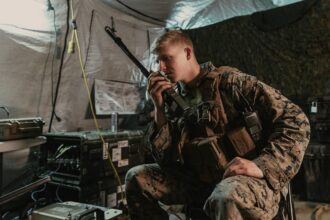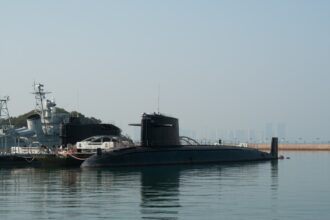Throughout history, resistance fighters have often been overshadowed by the grand narratives of war, their stories relegated to the margins of history books. These individuals, driven by a fierce desire for freedom and justice, took extraordinary risks to oppose oppressive regimes during World War
One particularly poignant story is that of the Danish resistance, which orchestrated a remarkable campaign to save the Jewish population from deportation.
This collective act of bravery not only saved thousands of lives but also demonstrated the power of solidarity in the face of tyranny.
The legacy of these forgotten heroes serves as a reminder that even in the darkest times, hope and humanity can prevail through acts of courage and compassion.
Key Takeaways
- Resistance fighters played a crucial role in WWII, but their stories are often overlooked.
- Civilian casualties of WWII have untold stories that need to be brought to light.
- Espionage and covert missions were a significant part of WWII, with many untold operations.
- War crimes trials after WWII have untold accounts of justice and retribution that need to be shared.
- Holocaust survivors have unimaginable stories of horror and resilience that must be heard.
The Hidden Victims: Uncovering the Stories of Civilian Casualties
While military engagements often dominate discussions about World War II, the civilian casualties tell a harrowing tale of suffering and loss that is frequently overlooked. Millions of innocent lives were lost due to bombings, massacres, and forced relocations, leaving deep scars on communities across Europe and Asia. The stories of these hidden victims reveal the profound impact of war on everyday people, who found themselves caught in the crossfire of global conflict.
In cities like Dresden and Hiroshima, civilians faced unimaginable horrors as their homes were reduced to rubble and their loved ones were taken from them in an instant. The aftermath of such devastation left survivors grappling with trauma and loss, often struggling to rebuild their lives amidst the ruins. These narratives highlight not only the physical destruction wrought by war but also the emotional toll it exacted on those who endured it.
By bringing these stories to light, society can honor the memory of those who suffered and ensure that their experiences are not forgotten.
The Secret Operations: Revealing the Espionage and Covert Missions of WWII
World War II was not only fought on battlefields; it was also waged in the shadows through espionage and covert operations that shaped the course of history. Intelligence agencies like the British MI6 and the American OSS undertook daring missions that involved gathering crucial information, sabotaging enemy operations, and even orchestrating assassinations. These secret operations often required immense bravery and ingenuity from operatives who risked their lives for their countries.
One notable example is Operation Overlord, which included a vast network of spies and informants who provided vital intelligence leading up to the D-Day invasion. The success of this operation hinged on meticulous planning and deception tactics that misled German forces about the true location of the Allied assault. The stories of these spies—many of whom remain anonymous—underscore the critical role that intelligence played in achieving victory during the war.
Their sacrifices and contributions remind us that warfare extends beyond combat; it encompasses a complex web of strategy, deception, and human courage.
The War Crimes Trials: Untold Accounts of Justice and Retribution
In the aftermath of World War II, the world grappled with how to address the atrocities committed during the conflict. The Nuremberg Trials marked a significant moment in history as leaders from Nazi Germany were held accountable for war crimes against humanity. However, beyond the high-profile defendants lay countless untold stories of justice and retribution that unfolded in various corners of the globe.
These trials sought not only to punish perpetrators but also to provide a platform for victims to share their harrowing experiences. The testimonies presented during these trials revealed chilling accounts of genocide, torture, and inhumane treatment that had been inflicted upon millions. Survivors took to the stand, recounting their experiences with a courage that resonated deeply with audiences worldwide.
These narratives served as a powerful reminder of the need for accountability in the face of such egregious violations of human rights. While some perpetrators evaded justice, many were brought to trial, ensuring that their actions would not be forgotten and that future generations would learn from these dark chapters in history.
The Untold Stories of Holocaust Survivors: Overcoming Unimaginable Horrors
The Holocaust stands as one of history’s most horrific events, yet within its depths lie countless untold stories of survival and resilience. Holocaust survivors emerged from unimaginable horrors with tales that reflect both profound suffering and remarkable strength. Their experiences serve as a testament to the human spirit’s ability to endure even in the face of overwhelming adversity.
Many survivors recount harrowing journeys through concentration camps, where they faced starvation, brutality, and dehumanization. Yet amidst this darkness, stories of hope emerged—of individuals who found ways to resist, support one another, or maintain their humanity against all odds. These narratives are not merely accounts of survival; they are powerful reminders of the importance of remembrance and education in preventing such atrocities from occurring again.
By sharing their stories, Holocaust survivors ensure that future generations understand the consequences of hatred and intolerance.
The Unsung Heroes: Revealing the Contributions of Women in WWII
While much attention is often given to male soldiers during World War II, women played an equally vital role in various capacities throughout the conflict. From serving in auxiliary military units to taking on roles in factories and farms, women stepped into positions traditionally held by men who had gone off to war. Their contributions were essential not only for sustaining wartime efforts but also for challenging societal norms regarding gender roles.
Women like Virginia Hall, an American spy who worked with the British Special Operations Executive, undertook dangerous missions behind enemy lines, gathering intelligence and aiding resistance movements. Others served as nurses on the frontlines or worked tirelessly in munitions factories, ensuring that troops had the supplies they needed to fight. These unsung heroes demonstrated resilience and determination, paving the way for future generations to challenge gender stereotypes and advocate for equality.
Their stories deserve recognition as integral parts of history that highlight women’s strength and capability during one of humanity’s most trying times.
The Resistance Movements: Uncovering the Stories of Defiance and Bravery
Resistance movements emerged across Europe as ordinary citizens banded together to oppose Nazi occupation and oppression. These groups were often composed of diverse individuals united by a common goal: to reclaim their freedom and dignity from tyrannical regimes. Their acts of defiance ranged from distributing underground newspapers to organizing armed uprisings against occupying forces.
One notable example is the Warsaw Uprising in 1944, where Polish resistance fighters launched a courageous but ultimately tragic attempt to liberate their city from German control. Despite being vastly outnumbered and outgunned, these fighters displayed extraordinary bravery in their struggle for freedom. Their story is emblematic of countless resistance movements that arose during this tumultuous period—each one a testament to human resilience against oppression.
By uncovering these narratives, society can honor those who fought valiantly for justice and inspire future generations to stand against tyranny.
The Untold Stories of POWs: Enduring Captivity and Survival
Prisoners of war (POWs) faced unimaginable hardships during World War II, enduring brutal conditions while held captive by enemy forces. Their stories often remain untold, overshadowed by larger military narratives; however, they reveal profound insights into human endurance and resilience under extreme duress. Many POWs experienced starvation, forced labor, and psychological torment as they navigated life behind barbed wire.
The experiences of individuals like Louis Zamperini—a former Olympic athlete who survived being shot down over the Pacific—illustrate both the horrors faced by POWs and their remarkable will to survive. Zamperini’s journey through captivity was marked by incredible challenges; yet he emerged with a story not just about survival but also about forgiveness and healing after returning home. These untold stories serve as powerful reminders that even in captivity, hope can endure, inspiring others to persevere against all odds.
The Forgotten Battles: Revealing the Stories of Lesser-Known Conflicts
While major battles like Stalingrad or Normandy dominate historical accounts of World War II, numerous lesser-known conflicts played crucial roles in shaping the war’s outcome. These forgotten battles often involved fierce fighting and significant sacrifices but have been relegated to obscurity over time. By uncovering these stories, historians can provide a more comprehensive understanding of World War II’s complexities.
One such battle is the Battle of Kasserine Pass in Tunisia—a significant early engagement between American forces and German troops that exposed weaknesses in U.S. military strategy. Despite its initial setbacks for American forces, this battle served as a learning experience that ultimately contributed to later successes in North Africa.
By shedding light on these lesser-known conflicts, society can appreciate the full scope of wartime experiences while honoring those who fought valiantly in battles that may have been forgotten but were no less significant.
The War Correspondents: Untold Accounts of Journalists on the Frontlines
War correspondents played an essential role during World War II by bringing firsthand accounts of conflict back home to audiences around the world. These journalists faced immense dangers as they ventured into combat zones to report on events unfolding before them—often at great personal risk. Their stories provide invaluable insights into both military operations and civilian experiences during wartime.
Correspondents like Ernie Pyle became household names for their poignant portrayals of soldiers’ lives on the frontlines. Pyle’s writing captured not only the heroism but also the humanity behind warfare—highlighting moments of camaraderie among troops amidst chaos. These untold accounts remind us that journalism serves as a vital link between those fighting on distant shores and those waiting anxiously at home for news about loved ones caught up in conflict.
The Aftermath: Uncovering the Stories of Rebuilding and Healing in the Wake of WWII
The end of World War II marked not only a cessation of hostilities but also an arduous journey toward rebuilding shattered nations and healing deep wounds inflicted by years of conflict. Communities across Europe faced daunting challenges as they sought to reconstruct their lives amidst ruins left behind by war’s devastation. The stories emerging from this period reveal resilience and determination among individuals striving for a better future.
In Germany, citizens grappled with guilt over their nation’s actions while working towards reconciliation with those they had wronged during Nazi rule. Similarly, countries like Japan faced immense challenges as they rebuilt after atomic bombings devastated cities like Hiroshima and Nagasaki. These narratives highlight not only physical reconstruction efforts but also emotional healing processes—demonstrating how societies can come together after trauma to forge new paths forward.
By uncovering these stories from various perspectives—resistance fighters, civilians affected by war crimes, women contributing behind-the-scenes—society can gain a deeper understanding of World War II’s complexities while honoring those whose voices have long been silenced or forgotten throughout history’s pages.
In the realm of World War II history, true crime stories often reveal the darker, lesser-known aspects of the era. One such intriguing narrative is explored in an article on “In The War Room,” which delves into the clandestine operations and espionage activities that took place during the war. This article provides a fascinating look at the covert missions and the individuals who risked everything in the shadows of global conflict. For those interested in uncovering these hidden stories, you can read more about it by visiting the article on In The War Room.
WATCH THIS! 😱The Nazi Trial America Never Wanted You To See 😱
FAQs
What is WWII history true crime?
WWII history true crime refers to the criminal activities and events that took place during World War II. This can include war crimes, espionage, sabotage, and other criminal acts that occurred during the war.
What are some examples of WWII history true crime?
Examples of WWII history true crime include the Holocaust, the Nuremberg Trials, the activities of Nazi war criminals, espionage operations such as the Manhattan Project, and acts of sabotage by resistance movements.
How is WWII history true crime studied and documented?
WWII history true crime is studied and documented through historical research, archival documents, eyewitness testimonies, and official records from the war. Historians and researchers also use declassified intelligence files and war crime investigations to uncover the truth about criminal activities during WWII.
Why is it important to study WWII history true crime?
Studying WWII history true crime is important for understanding the full scope of the war and its impact on individuals and societies. It also helps to hold perpetrators accountable for their actions and serves as a reminder of the consequences of war and criminal behavior.
What are some challenges in studying WWII history true crime?
Challenges in studying WWII history true crime include the destruction of evidence during the war, the passage of time leading to the loss of eyewitnesses, and the political sensitivities surrounding certain events and individuals. Additionally, accessing classified or restricted documents can also pose a challenge for researchers.




